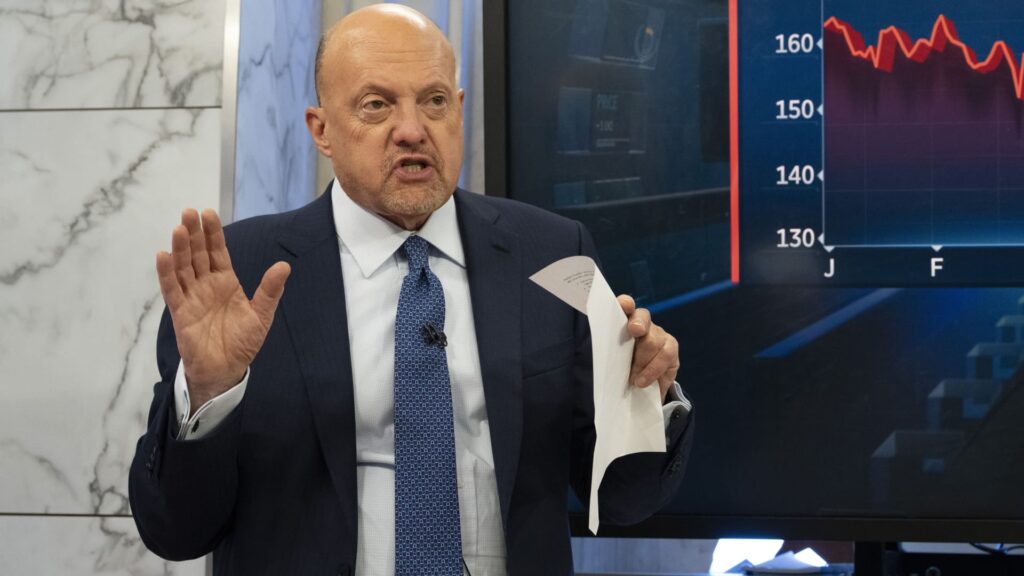Here’s our Club Mailbag email investingclubmailbag@cnbc.com — so you send your questions directly to Jim Cramer and his team of analysts. We can’t offer personal investing advice. We will only consider more general questions about the investment process or stocks in the portfolio or related industries. This week’s question: When you say to study each stock an hour a week, what key statistics should we be monitoring? What should we be looking at? Many thanks. — Melissa Goldberg Great question. We don’t advocate buy and hold, but rather for buy and homework. Devoting one hour a week per position is a general rule of thumb, but there will obviously be weeks when 10 or 20 minutes is all you need. If one of your holdings has an event or an earnings call, you may need more time. Just listening to calls or reading transcripts can eat up some time, but doing so is well worth it. The objective of staying current with Wall Street research, news events, industry trends and macroeconomic shifts is to answer one big question: Is my investment thesis still intact? Does this information support the idea that the company can meet or exceed Wall Street estimates for the upcoming quarter — and beyond. There is a ton of information out there, much of it free. A story we wrote last year — five ways to stay on top of the stocks you own, and the ones you’re looking to own — is a good primer to get started. Additionally, we want to point out that while reading analyst notes is always a great idea, not everyone has the same level of access to these resources. The story above was written for the home gamer who doesn’t have access to fancy tools or proprietary research. The level of digging required is going to vary from company to company. Larger companies are typically better covered and important information and data are more readily available. Sometimes you’ll check sources and there is no update. Other times it’s a plethora of news and you’ll need to spend more time than usual to get through it. At the Club, we strive to digest as much information as possible from our favorite sources, translate and share it with members. Good news: Reading our stories counts toward homework. Bonus idea: This isn’t something you’re going to do every week, but you can also include some good old-fashioned scuttlebutt research into the homework process. This is a concept originally devised by Phil Fisher and discussed in his book “Common Stocks and Uncommon Profits.” Essentially, the idea is to get out of the house, away from the screens, and go see things firsthand. If you’re invested in a retailer such as TJX Companies , you can scan Google all day long and that will inform you to a degree. But you could also get out to your local off-price T.J. Maxx, Marshalls, and HomeGoods and see the foot traffic for yourself, speak to the location manager, ask them about traffic, discount trends, customer commentary, and so on. Sure, it’s anecdotal, but you are going to pick up on things or at the very least, learn about a new angle that you should perhaps investigate. This can apply to anything really, you might track down and call up the owner of several restaurant locations ( Starbucks ), have one of your kids run a survey of the hottest sneaker trends at their high school ( Foot Locker ), ask which social media sites are most popular with the group of friends ( Meta Platforms ), etc. After all, we regularly highlight popular Piper Sandler’s teen survey . However, you don’t have to be a Wall Street analyst to survey your local community — and with social media so easily accessible, you can cast your net wider than ever even with limited resources. This is something Jim Cramer and our Club analysis team do all the time. Jim talks about going to his local Costco and what’s flying off the shelves. Or what his daughter is saying about the new Meta Ray-Bans. Or how he and his wife were in Foot Locker and the stores are looking better. It’s all research. (See here for a full list of the stocks INJim Cramer’s Charitable Trust.) As a subscriber to the CNBC Investing Club with Jim Cramer, you will receive a trade alert before Jim makes a trade. Jim waits 45 minutes after sending a trade alert before buying or selling a stock in his charitable trust’s portfolio. If Jim has talked about a stock on CNBC TV, he waits 72 hours after issuing the trade alert before executing the trade. THE ABOVE INVESTING CLUB INFORMATION IS SUBJECT TO OUR TERMS AND CONDITIONS AND PRIVACY POLICY , TOGETHER WITH OUR DISCLAIMER . NO FIDUCIARY OBLIGATION OR DUTY EXISTS, OR IS CREATED, BY VIRTUE OF YOUR RECEIPT OF ANY INFORMATION PROVIDED IN CONNECTION WITH THE INVESTING CLUB. NO SPECIFIC OUTCOME OR PROFIT IS GUARANTEED.
Jim Cramer on Squawk on the Street, June 30, 2022.
Virginia Sherwood | CNBC
Here’s our Club Mailbag email investingclubmailbag@cnbc.com — so you send your questions directly to Jim Cramer and his team of analysts. We can’t offer personal investing advice. We will only consider more general questions about the investment process or stocks in the portfolio or related industries.
This week’s question: When you say to study each stock an hour a week, what key statistics should we be monitoring? What should we be looking at? Many thanks. — Melissa Goldberg
